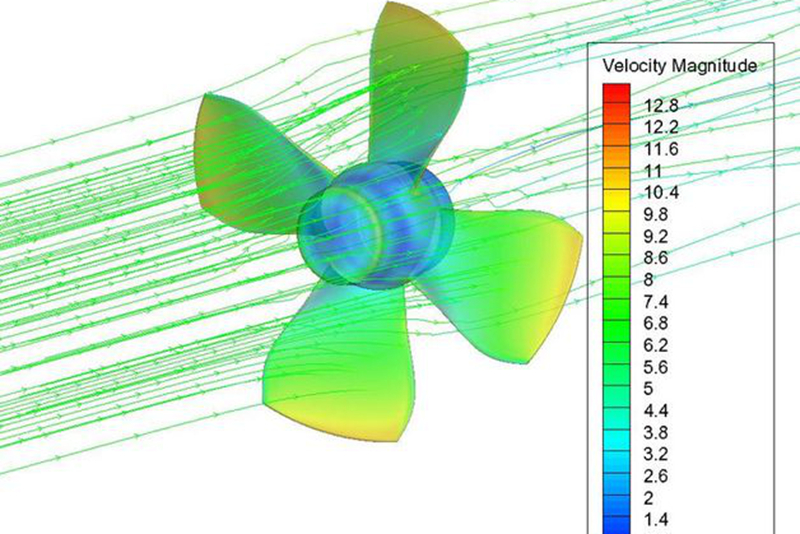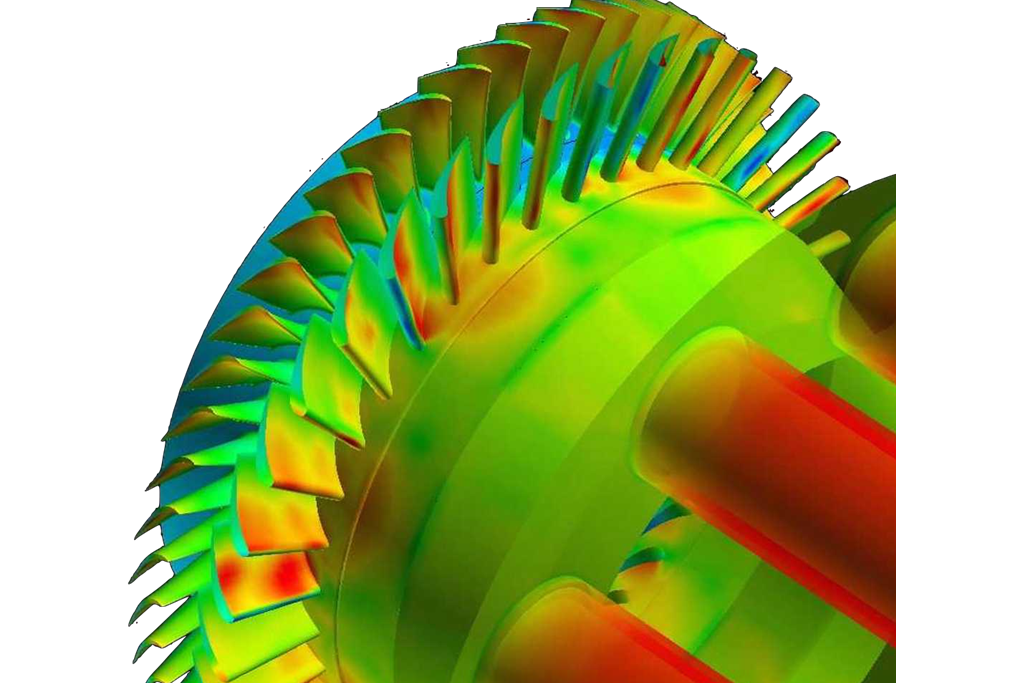Applications of Simulation Capabilities in Superalloy Parts Manufacturing
Simulation capabilities are increasingly becoming integral to modern manufacturing processes, especially in the high-stakes domain of superalloy parts. Simulations save time and resources by allowing virtual testing and design validation, enabling engineers to foresee and mitigate potential issues before physical production.
In superalloy parts manufacturing, simulation techniques are crucial to optimizing parameters such as solidification, microstructure formation, thermal stresses, and material deformation. This helps reduce defects, improve material properties, and meet the stringent requirements of industries like aerospace, power generation, and oil and gas.

Overview of Superalloy Manufacturing Processes and Simulation Integration
Superalloy manufacturing involves numerous advanced processes requiring precise control over material properties and production conditions. Simulation tools are critical in achieving these processes' desired quality and performance.
Vacuum Investment Casting: Vacuum investment casting is a complex process where molten superalloys are poured into ceramic molds. Simulation in this process helps predict mold filling, solidification patterns, and defects such as shrinkage and porosity. By optimizing these factors virtually, manufacturers can reduce wastage and improve the final product's integrity.
Single Crystal Casting: This specialized process produces turbine blades and other high-performance components. Simulation aids in modeling grain growth and optimizing the thermal gradients to ensure single-crystal formation, which is critical for superior creep resistance at high temperatures.
Equiaxed Crystal Casting: Equiaxed casting involves solidifying the superalloy with uniformly sized grains. Using simulations, manufacturers can control cooling rates and solidification, leading to consistent grain size and improved mechanical properties.
Directional Casting: Directional solidification creates components with columnar grains aligned in a specific direction, which enhances mechanical properties along the axis. Simulations help control the solidification front, ensuring minimal defects and optimized grain orientation for enhanced performance.
Powder Metallurgy: Simulations are used for particle packing, compaction, and sintering processes in powder metallurgy. This enables better control over density, grain size, and material homogeneity, which is crucial for achieving the desired mechanical properties.
Forging (Precision, Isothermal, Rough, and Free): Forging processes involve high pressures and temperatures to shape the alloy. Simulations predict material flow, die wear, and thermal behaviors, ensuring that the part has the required strength and dimensional accuracy while minimizing die damage.
Superalloy CNC Machining: CNC machining creates precise geometries in superalloy components. Simulations of toolpaths, cutting forces, and stress-strain relationships are crucial to reducing tool wear, avoiding part deformation, and maintaining high accuracy in the final product.
Superalloy 3D Printing: For additive manufacturing of superalloys, simulations address layer-by-layer deposition issues, such as warping, residual stress buildup, and thermal gradients. This ensures high precision and reduces defects in the final printed component.
Benefits of Simulation for Different Superalloys
Each superalloy type presents unique challenges, which can be addressed using targeted simulation capabilities.
Inconel Alloys
Inconel superalloys are prone to cracking during manufacturing. Simulations help model stress concentration areas and predict high-temperature properties, allowing adjustments that reduce the likelihood of cracking.
CMSX Series
These single-crystal superalloys, such as the CMSX Series, require directional solidification. Simulations help enhance solidification, ensuring the formation of a defect-free single-crystal structure, which is vital for high-temperature strength.
Monel and Hastelloy Alloys
Monel and Hastelloy alloys are often used in corrosive environments. Simulations help predict how process parameters impact corrosion resistance, ensuring the final product performs well in challenging conditions.
Stellite Alloys
Stellite alloys are highly wear-resistant. Simulation helps predict and mitigate excessive tool wear during machining, ensuring the parts retain their hard-facing properties.
Titanium Alloys
Titanium alloys are often chosen for their strength-to-weight ratio. Simulating the thermal behavior during processes like forging or 3D printing is critical for ensuring these alloys maintain their structural integrity without introducing internal stresses.
Rene Alloys
Rene alloys are often used in turbine blades that operate under extreme conditions. Simulations help to assess thermal expansion and creep behavior, ensuring structural integrity during high-temperature exposure.
Comparison of Post-Processes and Simulation Needs
Post-processing plays a critical role in achieving the desired performance characteristics of superalloy parts. The integration of simulation in these post-processes ensures optimal outcomes.
Heat Treatment Simulation
Heat treatment affects the microstructure and mechanical properties of superalloys. Simulating heat treatment cycles allows for precise grain growth control, phase transformation, and the resulting mechanical properties. This ensures consistent quality in components subjected to thermal cycling.
Hot Isostatic Pressing (HIP)
HIP is used to eliminate internal porosity. Simulating the pressure and temperature conditions helps optimize pore closure and maximize the density and mechanical properties of the superalloy. This is particularly useful for parts manufactured through powder metallurgy or additive manufacturing.
Thermal Barrier Coating (TBC) Application
Thermal Barrier Coatings (TBCs) protect parts from high temperatures. Simulation helps optimize coating thickness, ensure uniform coverage, and predict the behavior of the coating under thermal cycling, thereby improving the part's lifespan in high-temperature environments such as gas turbines.
Superalloy Welding
Superalloy welding induces high thermal stresses, leading to residual stress and potential defects. Simulating welding processes helps adjust welding parameters to minimize heat-affected zones and residual stresses, ensuring the structural integrity of the welded component.
Testing Simulation Capabilities for Superalloy Parts
Simulations are instrumental in replicating the conditions that superalloy components will face during their operational life, helping to predict performance and identify potential issues. These capabilities enhance physical testing by providing detailed insights into component behavior, enabling better design and quality assurance.
Fatigue Testing
Fatigue failure is a critical concern in components subjected to cyclic loads, such as turbine blades. Simulating fatigue testing helps predict life cycles and improves design for better durability. By integrating CFD simulations, engineers can model stress distributions and identify high-risk areas to enhance the component's resilience to cyclic stresses.
Thermal Testing
Superalloys must withstand significant temperature variations. Simulating thermal expansion and contraction helps predict potential deformation or failure points, ensuring stability under operational conditions. Advanced simulation tools work with thermal physical property tests to validate component behavior in high-temperature environments, such as engines and reactors.
Mechanical Testing
Mechanical testing simulations, including tensile and compressive force simulations, validate whether the superalloy components meet the required performance criteria. This is essential for components used in high-stress environments like aerospace engines. Combining these simulations with metallographic analysis ensures that the material’s microstructure aligns with expected performance parameters, reducing the likelihood of failure under extreme conditions.
These simulation capabilities enable manufacturers to predict operational behavior, optimize designs, and ensure that superalloy components meet stringent quality and performance requirements.
Industry-Specific Applications and the Role of Simulation
Superalloy parts are used across multiple industries, each with specific operational requirements. Simulation helps tailor the manufacturing process to meet these diverse needs.
Aerospace and Aviation
Superalloy parts are exposed to extreme temperatures and stresses in the Aerospace and Aviation industry. Simulations ensure that components like turbine blades and exhaust systems are optimized for creep resistance, fatigue life, and high-temperature stability. This optimization is critical to ensuring the safety and performance of jet engines and other aerospace systems under demanding conditions.
Energy and Power Generation
In Energy and Power Generation, components like turbine discs and heat exchangers require optimization for thermal performance. Simulations help predict how these parts will behave under fluctuating load conditions, enhancing efficiency and safety. This ensures that power generation systems operate reliably over long periods without failure, maintaining high operational efficiency.
Oil and Gas
In the Oil and Gas sector, superalloy components must withstand corrosive environments and high pressures. High-temperature alloy pump components and similar parts benefit from simulations that predict their performance in the field, ensuring reliability and longevity. This capability helps minimize unexpected downtimes and maintain continuous oil extraction and refining operation.
Automotive
Superalloy components are increasingly used in the Automotive sector for turbochargers, exhaust systems, and transmission parts. Simulations help optimize weight, strength, and thermal properties, improving fuel efficiency and reducing emissions. Parts like superalloy transmission component assemblies are designed to handle high mechanical loads while keeping the vehicle’s overall weight to a minimum, enhancing performance.
Marine and Chemical Processing
Superalloys are valued for their exceptional corrosion resistance in the Marine and Chemical Processing industries. Simulation capabilities help design parts like superalloy naval ship modules that can endure saltwater exposure and chemical attack, enhancing longevity and reducing maintenance costs. This not only boosts the reliability of marine vessels but also contributes to the economic viability of chemical processing facilities by reducing material degradation.
FAQs
What are the primary benefits of using simulation in superalloy manufacturing?
How do simulations improve the quality of cast superalloy components?
Which superalloy types benefit most from heat treatment simulations?
How does simulation aid in preventing defects during the forging of superalloy parts?
What are the key industry applications that benefit from simulation in superalloy manufacturing?




